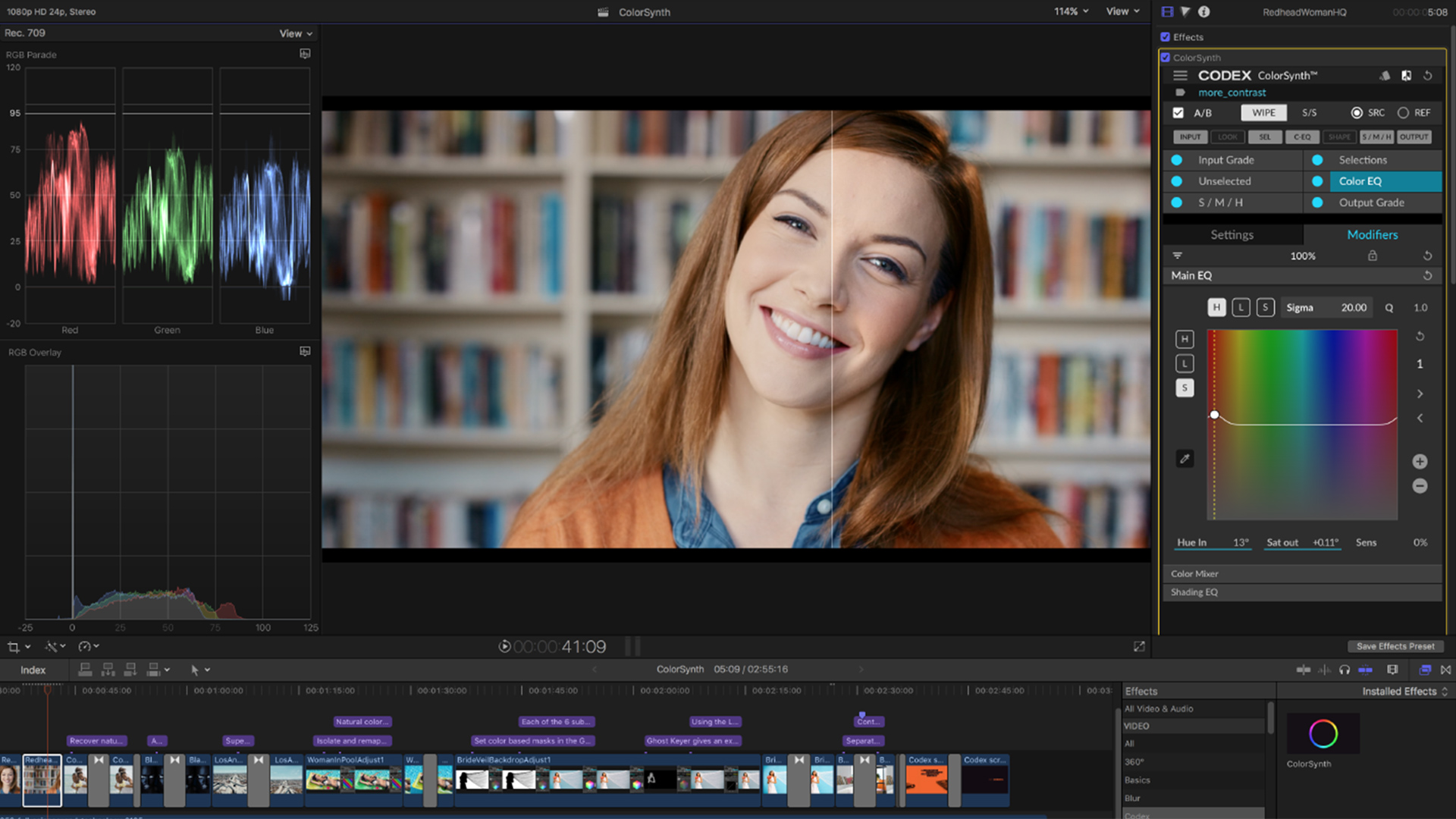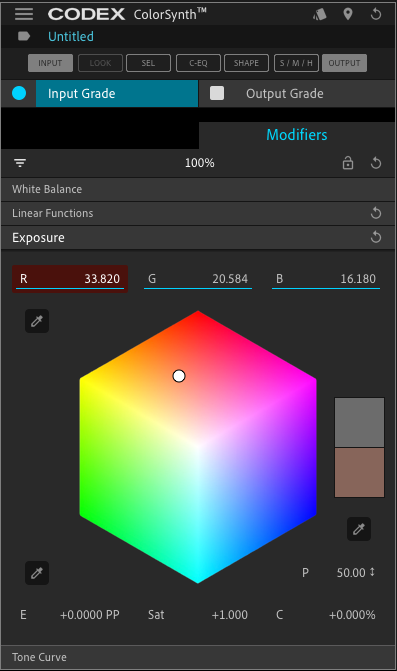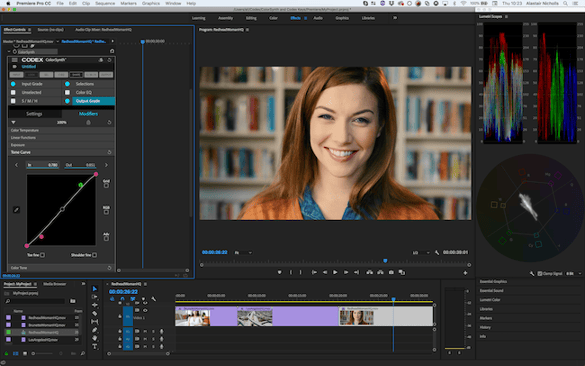

Early last year, Codex announced the introduction of a new, dedicated colour correction plug-in - ColorSynth. The platform was exclusive to Final Cut Pro X users and therefore Mac-only as well. Recently, Codex brought Color Synth to Premiere, After Effects, and the Windows platform as well. Arthur Ditner takes a close look.
The biggest definer of ColorSynth is that there is no traditional 3-way corrector and no support for trackball control surfaces. Fear not, editing colour with click-and-drag operations with a mouse is perfectly fluid in the software’s hexagonal view. Clicking the R, G, or B values also edits these parameters. R, G, B tonal offsets can be manipulated across the whole image or into regions of thirds defined by shadows, midtones and highlights. If you colour grade with traditional “printer lights”, you will feel right at home using this interface. Manipulating ColorSynth is extremely precise and exact duplicates of adjustments can easily be repeated.

I asked the Codex team why not do with a standard 3-way interface with trackballs and call it a day. Here is their response:
“In ColorSynth the math used to control RGB tint is guaranteed to be absolutely precise: If the image exposure is changed, say by 0.33 EV through RGB tinting, this change can be perfectly compensated through the master RGB exposure parameter. This level of precision and predictability is expected by high-end film colourists who count "clicks" when grading, as opposed to vaguely moving trackballs”.
Working with ColorSynth is just like any other Premiere plug-in. The effect can be applied to either a piece of media or an adjustment layer.

The plug-in works by layering a series of adjustments which are: input, color selections, colour EQ, shapes, shadows / midtones/ highlights, and output. Usually, you would want to apply transform LUTs in the output tab and do white balancing and contrast adjustments on the input tab. “Color Selections” functions similarly to a chrominance keyer, adjusting light, saturation, and hue values for any given target colour.

The Color EQ functions similar to hue vs, saturation vs, and light vs curves. However, Codex is quick to point out that while the functionality is similar, the math behind these processes is very different. Using the Color EQ tool was intuitive. The “Q” value works just as you would expect from a parametric equalizer in a DAW, adjusting the width of the band for a selected region. I pushed a hue vs hue offset pretty hard in some generic, processed stock media and was impressed with the results - there was very little noise to be found during playback.

Before

After
The Shadows, Midtones, Highlights layer is where you will be spending most of your time. It’s quick enough flipping between these regions and the definitions of each region are user-definable. However, it is a bit slower than using a straightforward 3-way corrector. That isn’t to say that the results are unimpressive.
It took about an hour to learn the suite and get comfortable moving around. During my testing, I became accustomed to working ColorSynth on both a per-clip level and as an adjustment layer. At the per-clip level, I would apply the appropriate transform LUT, white balance and perform secondary corrections. On the adjustment layer, I would spend time on “the look”, globally altering temperature, tint, and experimenting with colourising the shadows, etc.
ColorSynth is an excellent colour-only plug-in and is not a full-featured suite with the same tools that you may expect to find in Resolve, Baselight or Mistika. For instance, there is a shape-based corrector. However, shapes have to be manually tracked and shapes cannot be blurred, although you could easily perform a shape track or a blur within Premiere’s default effects toolkit. To this regard for full-blown online work, the plug-in works as only part of the system as a whole.
Codex ColorSynth is a compelling option if you are a colourist looking to keep the workflow “in-the-box” and not be bothered with sending out and doing a conform in another application. The results are quite nice and the development team was very friendly during my testing period with the program.
Part 2 of this article will look at the Keys hardware separately.
The software is available for purchase now at the price of $99 USD, and a 30-day trial (albeit watermarked) is available for download on Codex’s website.
Tags: Post & VFX


Comments